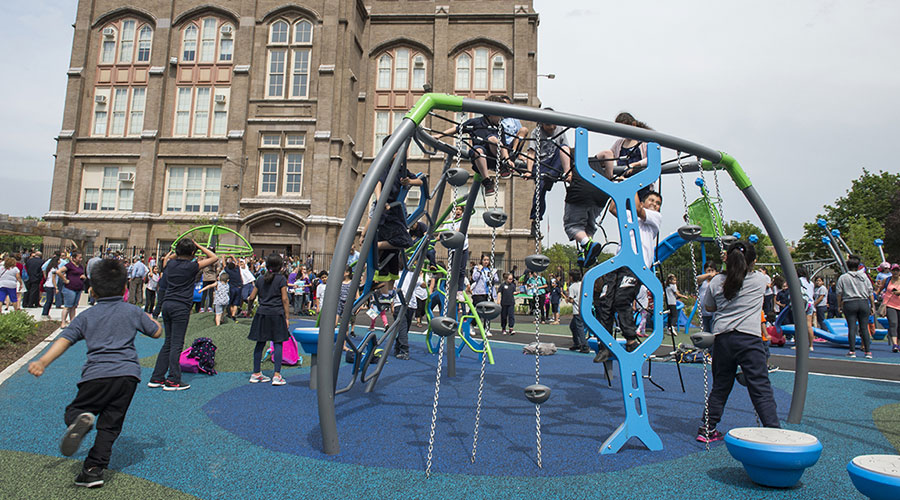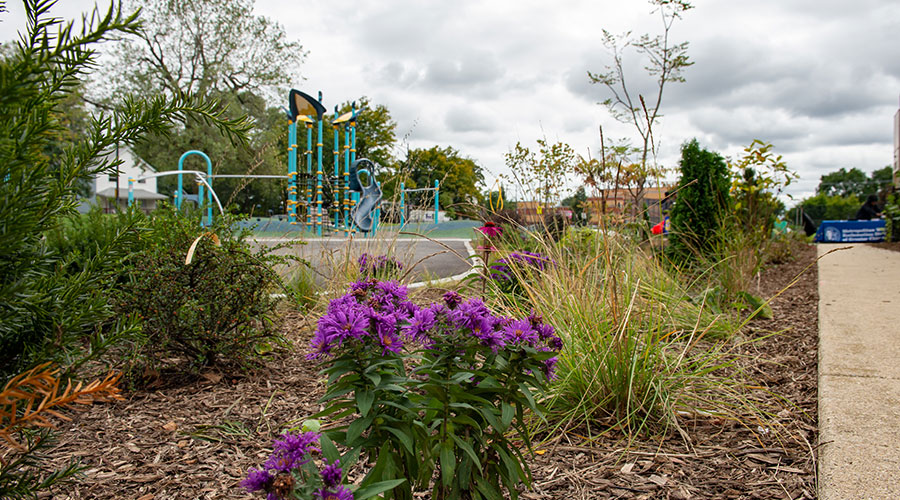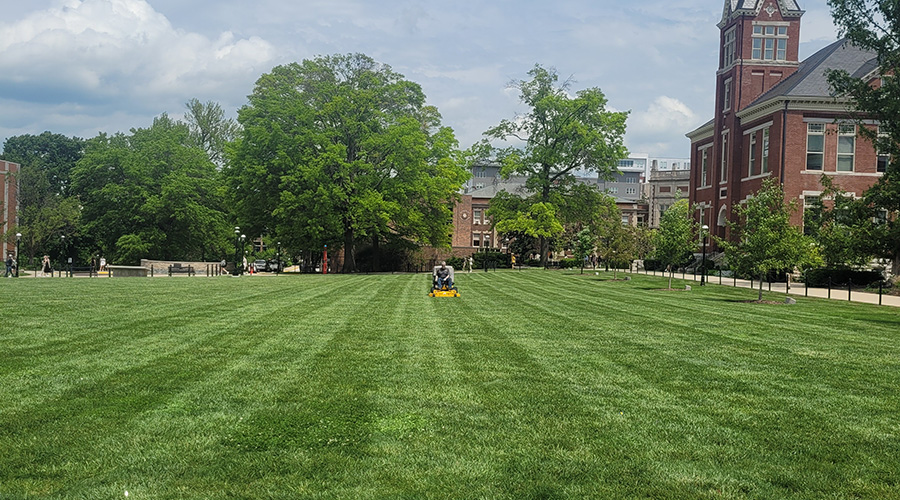Chicago Public Schools Playgrounds Receive Boost with Space to Grow Program
Chicago Public Schools invests in greener, more appealing playgrounds to benefit students and communities.
As the leader of a high-profile school district, Ivan Hansen knows quality education goes beyond the doors of the school buildings he oversees. Physical education is an often-overlooked aspect of the K-12 school experience. As a result, more districts are incorporating outdoor education into their curriculums for health and wellness purposes.
Among those urban school districts is Chicago Public Schools (CPS), where Hansen is chief facilities officer. In 2014, the district launched the Space to Grow program dedicated to improving the playgrounds at its schools. To date, 36 elementary schools have received green upgrades to their playgrounds, with five more scheduled to open in the fall.
While each space is designed to tell a story about the school and its neighborhood, one message unites them – making schools a better place for the students and community that use them.
“Each space is unique, so the type of elements present will determine how it is incorporated into the educational programming,” Hansen says. “The schoolyards serve as a brilliant extension of the classroom for lessons ranging from science experiments to nutrition education.”
Coming together
Space to Grow emerged from CPS and the Chicago-based Healthy Schools Campaign organization as a way to reinstate recess as part of the district's physical education program.
Many of the district’s students had to use playgrounds that were nothing but concrete slabs with maybe a basketball hoop. The concrete layouts were unappealing and uninteresting aesthetically, and surface temperatures soared in hot weather.
“With a focus on outdoor environments, how could we create beautiful outdoor areas for students to learn, play and grow?” Hansen asks. “This question planted the seed for what Space to Grow would become.”
The district found project partners for Space to Grow in the nonprofits Healthy Schools Campaign and Openlands, a conservation organization in Northeastern Illinois. The two organizations partnered with the district, the Chicago Department of Water Management and the Metropolitan Water Reclamation District of Greater Chicago to transform the district’s schoolyards into more appealing, climate-resilient outdoor spaces.
As recently as 2012, daily recess was not part of the daily routine for district students. Now that recess returned to the curriculum, it was time to update the spaces where kids would spend more time during the school day.
“We heard from so many different school leaders that having recess back is great, but the fact that the asphalt outside was crumbling or that schoolyards were flooding after major storms or there was broken playground equipment that just wasn’t safe — that was all a major wakeup call,” says Emily Zhang, the Space to Grow project manager at Healthy Schools Campaign. “It was not enough to just mandate that recess is back.”
The two city water agencies and the school district shared project costs. Hansen says the intent for Space to Grow is for all three partners to have an equal share in the project budget.
As is the case for many large urban districts, space and money are not often overflowing. Completing projects often requires partners who are passionate about the cause.
“It is a collaborative process combining data from different partners to look at flood risk, impervious surface and equity at locations across the city,” Hansen says of the school selection process.
Design features
Each of the CPS playgrounds are unique in the way the school uses it, but they share one characteristic, and it is an important reason the water districts play such a large role in the Space to Grow program: better stormwater management.
Instead of the ponding and flooding that consistently occurred on playgrounds, stormwater is now used for trees, shrubs and native plants.
“Each space is going to look a little different,” says Danielle Russell, the Green Schoolyards program manager at Openlands. “All of the schoolyards are going to have greenery, as we’re big on native plants because of their ability to have long roots that can soak up water. You’ll also see some type of outdoor learning space and some type of physical activity element, whether it’s a playground or basketball, some type of sports element or a turf field.”
The community plays a significant role in the design process, Russell says, adding “we’re asking people what they want to see. As long as it’s not a tiger cage or a roller coaster, they are things that we will try to incorporate.”
When planning the green schoolyards, districts should consider, “opportunities where students can grow, learn and experience,” said Sarka Volejnikova, a San Francisco-based landscape architect during session on green schoolyards at the U.S. Green Building Council’s recent Green Schools Conference.
When designing outdoor playground spaces, Volenjnikova says district officials should include: trees and shrubs; natural areas; traditional playground equipment; classrooms; gardens growing edible food; native and pollinator gardens; and stormwater management features.
As districts add green schoolyards, leaders are noticing trends that include increased engagement among students and staff, fewer disciplinary issues, more diverse activities for students and community users, increased retention of staff and students and cooler spaces.
“Every project has been a success story in providing an outdoor space that students and the community can utilize while also providing stormwater retention to help in areas with higher flood risk,” Hansen says. “The grounds feature areas for learning and exploration, such as outdoor classrooms, native trees and vegetable gardens. Plus, the boost in energy and focus that students get from running and playing outside helps improve behavior and academic performance in the classroom.”
Dave Lubach is the executive editor for the facilities market. He has 10 years of experience writing about facility management and maintenance issues.
Related Topics:













